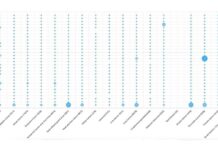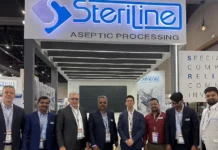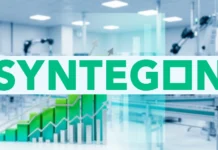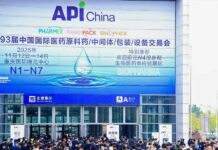Pfizer Inc announced the publication of findings from the Phase 3 INO-VATE ALL study in the online issue of The New England Journal of Medicine.
The study, also known as Study 1022, is an open-label, randomized, Phase 3 study evaluating the safety and efficacy of inotuzumab ozogamicin as compared with investigator-choice chemotherapy in 326 adult patients with relapsed or refractory CD22-positive acute lymphoblastic leukemia (ALL). Results showed improvement over chemotherapy on a number of measures including complete hematologic remission and progression-free survival (PFS). Updated results and newly available overall survival (OS) data were also presented as a late-breaking oral presentation (#LB2233) today at the 21st Congress of the European Hematology Association (EHA) 2016 Annual Meeting in Copenhagen, Denmark.
“Relapsed or refractory ALL is an aggressive leukemia in urgent need of new treatment options as about half of adult patients will not respond to chemotherapy or will see their disease return,” said Hagop M. Kantarjian, M. D., lead study investigator and professor, The University of Texas MD Anderson Cancer Center. “The efficacy results seen in patients treated with inotuzumab ozogamicin in this study are impressive, particularly median progression-free survival, high rates of hematological remission and absence of minimal residual disease. These results suggest inotuzumab ozogamicin, if approved, could be a valuable new addition to currently available treatment options for ALL patients, including as a bridge to stem cell transplantation, which is the best chance for a cure at this stage of the disease.”
The INO-VATE ALL study had two independent primary endpoints, complete response with or without hematologic remission and OS. INO-VATE ALL met its first primary endpoint of complete response, which was significantly better with inotuzumab ozogamicin compared to chemotherapy (80.7% [95% CI, 72%-88%] vs. 29.4% [95% CI, 21%-39%], P<0.001). Inotuzumab ozogamicin also significantly extended PFS compared to chemotherapy (HR: 0.45 [97.5% CI, 0.34-0.61], P<0.001; median PFS, 5.0 vs. 1.8 months, in their respective arms). The second primary endpoint of OS showed a strong trend toward longer OS for patients treated with inotuzumab ozogamicin compared to chemotherapy, but did not reach the level of statistical significance (p < 0.0104) for the trial (HR: 0.77 [97.5% CI, 0.58-1.03], one-sided P=0.0203; median OS, 7.7 months [95% CI, 6.0-9.2] vs. 6.7 months [95% CI, 4.9-8.3]). The two-year OS rate for inotuzumab ozogamicin was 23 percent (95% CI, 16%‒30%) compared to chemotherapy at 10 percent (95% CI, 5%‒16%).
“Adult patients with relapsed or refractory ALL have a five-year survival rate of less than 10 percent, making these patients particularly difficult to treat. To see remission rates and two-year survival rates that are more than doubled compared to standard of care chemotherapy is very gratifying. We believe these data add to the growing body of evidence that supports inotuzumab ozogamicin as an important potential treatment option in adults with relapsed or refractory ALL,” said Mace Rothenberg, MD, Chief Development Officer, Oncology, Pfizer Global Product Development.
Results from INO-VATE ALL also showed patients treated with inotuzumab ozogamicin achieved high rates of minimal residual disease (MRD) negativity (78.4% [95% CI, 68%-87%; P<0.001]), and experienced a duration of response (DOR) of 4.6 months (95% CI, 3.9-5.4; HR: 0.55; P<0.034). In comparison, 28.1 percent (95% CI, 14%-47%; P<0.001) of patients treated with chemotherapy achieved MRD negativity and median DOR was 3.1 months (95% CI, 1.4-4.9; HR: 0.55; P<0.034). More patients also proceeded to stem-cell transplant with inotuzumab ozogamicin compared to standard chemotherapy (41% vs. 11%, P<0.001).
The most common adverse events (AEs) observed for both inotuzumab ozogamicin and chemotherapy were cytopenias, including febrile neutropenia (16% vs. 22%). Common nonhematologic treatment-emergent AEs with inotuzumab ozogamicin included nausea (32%), headache (28%) and pyrexia (27%). Patients in the chemotherapy arm experienced nausea (47%), pyrexia (43%) and diarrhea (40%).
Additionally, any-grade veno-occlusive liver disease (VOD) occurred more frequently in patients treated with inotuzumab ozogamicin compared to chemotherapy (11% vs. 1%). Five patients taking inotuzumab ozogamicin developed VOD during treatment and 10 patients developed VOD after subsequent stem cell transplant. Among those taking chemotherapy, one patient developed VOD after transplant; no cases of VOD occurred during treatment with chemotherapy.
Inotuzumab ozogamicin received Breakthrough Therapy designation from the U.S. Food and Drug Administration (FDA) for ALL in October 2015. Pfizer is working closely with the FDA and other regulatory authorities with the aim of making inotuzumab ozogamicin available for adult patients with relapsed or refractory CD22-positive ALL.
Pfizer Inc.: Working together for a healthier world®
At Pfizer, we apply science and our global resources to bring therapies to people that extend and significantly improve their lives. We strive to set the standard for quality, safety and value in the discovery, development and manufacture of healthcare products. Our global portfolio includes medicines and vaccines as well as many of the world’s best-known consumer healthcare products. Every day, Pfizer colleagues work across developed and emerging markets to advance wellness, prevention, treatments and cures that challenge the most feared diseases of our time. Consistent with our responsibility as one of the world’s premier innovative biopharmaceutical companies, we collaborate with health care providers, governments and local communities to support and expand access to reliable, affordable health care around the world. For more than 150 years, Pfizer has worked to make a difference for all who rely on us. For more information, please visit us at www.pfizer.com. In addition, to learn more, follow us on Twitter at@Pfizer(link is external) and @Pfizer_News(link is external), LinkedIn(link is external), YouTube, and like us on Facebook at Facebook.com/Pfizer(link is external).
1 National Cancer Institute: Adult Acute Lymphoblastic Leukemia Treatment (PDQ®) – General Information About Adult Acute Lymphoblastic Leukemia (ALL). Available at:http://www.cancer.gov/cancertopics/pdq/treatment/adultALL/HealthProfessional/page1(link is external). Accessed March 21, 2016.
2 American Cancer Society: Typical treatment of acute lymphocytic leukemia. Available at:http://www.cancer.org/cancer/leukemia-acutelymphocyticallinadults/detailedguide/leukemia-acute-lymphocytic-treating-typical-treatment(link is external). Accessed March 21, 2016.
3 American Cancer Society: What are the key statistics about acute lymphocytic leukemia? Available at:http://www.cancer.org/cancer/leukemia-acutelymphocyticallinadults/detailedguide/leukemia-acute-lymphocytic-key-statistics(link is external) (link is external). Accessed March 21, 2016.
4 Manal Basyouni A. et al. Prognostic significance of survivin and tumor necrosis factor-alpha in adult acute lymphoblastic leukemia. doi:10.1016/j.clinbiochem.2011.08.1147.
5 Fielding A. et al. Outcome of 609 adults after relapse of acute lymphoblastic leukemia (ALL); an MRC UKALL12/ECOG 2993 study. Blood. 2006; 944-950.
6 Leonard J et al. Epratuzumab, a Humanized Anti-CD22 Antibody, in Aggressive Non-Hodgkin’s Lymphoma: a Phase I/II Clinical Trial Results. Clinical Cancer Research. 2004; 10: 5327-5334.
7 DiJoseph JF. Antitumor Efficacy of a Combination of CMC-544 (Inotuzumab Ozogamicin), a CD22-Targeted Cytotoxic Immunoconjugate of Calicheamicin, and Rituximab against Non-Hodgkin’s B-Cell Lymphoma. Clin Cancer Res. 2006; 12: 242-250.
Contact:
Media:
Sally Beatty, 212-733-6566
or
Investors:
Ryan Crowe, 212-733-8160



















